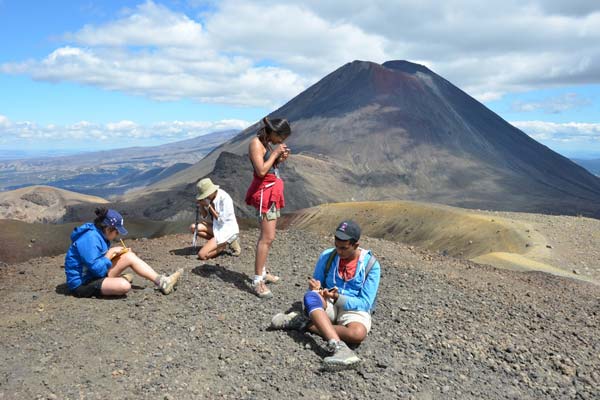
Hands-on geology: Earth Science students in New Zealand
Published: February 22, 2013
Bubbling mud pits, lakes of sulphur and erupting volcanoes are just a few of the sights Earth Science students from the University of Toronto encountered while spending Reading Week conducting research in New Zealand.
The group is studying geothermal activity and mineralization in the central volcanic region of New Zealand's North Island and volcanic features related to subduction zones on a hike across the Tongariro volcanic complex.
The latter part of the trip looks at the tectonic regime of the South Island and specifically the relationships between geological features and the Alpine Fault, a major active tectonic plate boundary.
 The students proposed the first-hand research experience themselves and received funding for the expedition through the Faculty of Arts & Science International Course Modules program.
The students proposed the first-hand research experience themselves and received funding for the expedition through the Faculty of Arts & Science International Course Modules program.
 “Geologic training in the classroom is limited,” explains Pysklywec. “A practising geologist must look at features from a range of scales: microscopic, hand sample, outcrop, regional and global. Of these five, only the two smallest and the largest can be achieved in the indoor classroom.
“Geologic training in the classroom is limited,” explains Pysklywec. “A practising geologist must look at features from a range of scales: microscopic, hand sample, outcrop, regional and global. Of these five, only the two smallest and the largest can be achieved in the indoor classroom.


